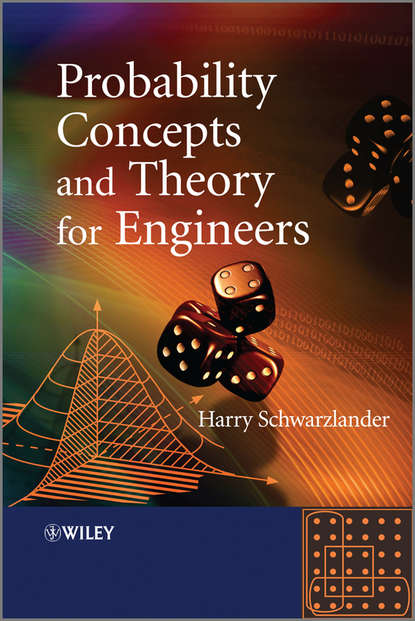Вероятность и теория для инженеров - это книга американского математика Гарри Шварцландера, которая предлагает подробное объяснение базовых моделей и математических принципов применения теории вероятности к практическим задачам. Цель этой книги состоит в том, чтобы дать читателю прочный фундамент, который поможет решать сложные задачи в области вероятности, а также пригодится для продолжения изучения более продвинутых тем.
В книге рассматриваются случайные переменные в одном и нескольких измерениях, включая сингулярные случайные переменные, преобразования, характеристические функции и последовательности. Особое внимание уделяется таким специальным темам, как нечеткость, энтропия, радиально-симметричные случайные величины и корреляции. Кроме того, благодаря уникальным, структурированным учебным модулям, состоящим из восьмидесяти шести подразделов, каждый из которых сопровождается кратким обзором задач и ответом, вероятность и теория становится доступной как для студентов-инженеров, так и для практикующих инженеров и исследователей, которым необходимо более глубокое понимание конкретных тем.
Эта книга представляет собой основательное введение в основы теории вероятностей. В ней подробно объясняется, какие базовые модели и математические принципы применяются при решении реальных задач. Книга также дает читателю основу для формулирования и решения множества вероятностей задач для того, чтобы получить дополнительные результаты, которые требуются для более сложных вопросов. Также она пригодна для изучения более продвинутых тем.
Электронная Книга «Probability Concepts and Theory for Engineers - Harry Schwarzlander» написана автором Harry Schwarzlander в году.
Минимальный возраст читателя: 0
Язык: Английский
ISBN: 9780470976470
Описание книги от Harry Schwarzlander
A thorough introduction to the fundamentals of probability theory This book offers a detailed explanation of the basic models and mathematical principles used in applying probability theory to practical problems. It gives the reader a solid foundation for formulating and solving many kinds of probability problems for deriving additional results that may be needed in order to address more challenging questions, as well as for proceeding with the study of a wide variety of more advanced topics. Great care is devoted to a clear and detailed development of the ‘conceptual model' which serves as the bridge between any real-world situation and its analysis by means of the mathematics of probability. Throughout the book, this conceptual model is not lost sight of. Random variables in one and several dimensions are treated in detail, including singular random variables, transformations, characteristic functions, and sequences. Also included are special topics not covered in many probability texts, such as fuzziness, entropy, spherically symmetric random variables, and copulas. Some special features of the book are: a unique step-by-step presentation organized into 86 topical Sections, which are grouped into six Parts over 200 diagrams augment and illustrate the text, which help speed the reader's comprehension of the material short answer review questions following each Section, with an answer table provided, strengthen the reader's detailed grasp of the material contained in the Section problems associated with each Section provide practice in applying the principles discussed, and in some cases extend the scope of that material an online separate solutions manual is available for course tutors. The various features of this textbook make it possible for engineering students to become well versed in the ‘machinery' of probability theory. They also make the book a useful resource for self-study by practicing engineers and researchers who need a more thorough grasp of particular topics.



















